You don’t have to be an environmental activist to realize just how vulnerable the Earth’s ecosystem is. Can modern technology help us protect it? Can we employ artificial intelligence to save the environment globally? I have a few examples for you to demonstrate how a combination of technology and nature may produce benefits, particularly for the latter.
While the idea of harnessing solar energy or developing environmentally friendly cars is by no means new, one can now stretch it a whole lot further. Even to slowing down, if not preventing the extermination of rare animal species and monitoring forest degradation and air pollution.
The new-generation interactive tools that increasingly pervade our daily lives, such as cameras, sensors, drones, recording devices, satellites and electronic maps, work wonderfully in rough and extreme conditions. The kind of conditions encountered in wildernesses. Information technologies definitely make fascinating environmental projects easier, or even possible. Artificial brains save the Earth.
On rhinos and sensors
The creeping destruction of fauna can be attributed to a handful of causes. One of them is the cutting down of tropical forests: a violent intrusion into the natural habitats of many species. Another is massive, profit-driven poaching which adds to the destruction. Fortunately, there are also initiatives that help effectively monitor such devastation. Many of the environmentalists who engage in campaigns to save dying species go on to become efficient lobbyists and advocates in the world of politics and business. They make politicians and entrepreneurs increasingly aware of the need to invest in neglected parts of the world, and areas in which negative human impact is particularly compelling. One example I can quote is the Great Elephant Census project. For two years now, a co-founder of Microsoft and the founder of Vulcan Inc., Paul Allen, has conducted research in Africa using new technologies and, in particular, big data. Specifically, he keeps track of elephant headcounts in 18 countries. As it turns out, over the last seven years, the world’s elephant population has fallen by 30 percent. The main reason is increased demand for ivory among buyers in China. Highlighted by Allen, the alarming data has finally reached the Chinese authorities, which – in late 2016 – put in place restrictions on companies involved in the ivory trade.
Great Elephant Census project
Another exciting technology used to stop poachers has been deployed to fight rhino hunters (rhinoceros horns contain keratin, an ingredient of numerous medications). The system, called RAPID, which is an acronym for Real-Time Anti-Poaching Intelligence Device, has been developed in the United Kingdom. It relies on GPS technology and consists of electronic devices placed on rhinos to monitor their heartbeats. These activate whenever the heartbeat rises or falls too rapidly. When this happens, control center staff are immediately notified. If animals are found to be moving around unnaturally, the relevant services are promptly dispatched to the herd. Groups that use such electronics to fight poaching include the Anti-Poaching Foundation. Its arsenal also includes drones and infrared cameras.

Victoria Falls – International Anti Poaching Foundation. Link
What’s up with birds?
One research area in which technology provides exciting opportunities is ornithology. Ornithologists face a huge challenge in protecting dying and endangered species. Some notable projects are being conducted by the Cornell Lab of Ornithology, an institute known for its bird research. As early as 2002, the institute launched the integrated online checklist program eBird, which it has been successively expanding ever since. The website is used to collect data from recreational users as well as ornithologists. Users are encouraged to upload multimedia records (photographs, audio and video files), which then become accessible to the entire community. eBird has built up a database of hundreds of thousands of registered participants who have submitted hundreds of millions of unique sightings. In 2015 alone, as many as 9.5 million observations were reported! Updated daily, eBird data is commonly available on its website or through an app. The machine learning techniques used by the program help model bird behaviors and specifically migration and breeding patterns. The records are also fed into the Avian Knowledge Network (AKN) database, which integrates data on bird populations across the western hemisphere. AKN also feeds eBird data to international biodiversity data systems.
Introduction to eBird, Cornell Lab of Ornithology. Source: eBird
Algorithms immersed in oceans
The sea and ocean environment has long been explored using some of the most sophisticated technology tools. Today’s technologies make it child’s play to explore natural environments under the sea. The American Goddard Space Flight Center, which belongs to NASA, relies on machine learning to track microscopic algal growth in oceans. The microalgae, which float on the water’s surface, are largely responsible for producing oxygen, an element essential for supporting life.
Many underwater observations rely on advanced detection technologies. Devices fitted with specially-designed sensors are used in research by the Japan Agency for Marine Earth Science and Technology. The agency has focused on measuring pH levels on sea and ocean floors. Such parameters are essential for the safety of the entire ecosystem.
A few years ago, Okayama University constructed a robot capable of moving under water. This autonomous machine can spend long hours under the sea detecting sonar signals and various objects. The robot is equipped with a technology that allows it to actively process data and track objects, even as close up as 5 millimeters. Okayama University also conducts other research using state-of-the-art equipment. It monitors ocean and lake contamination, harmful metal radiation and the occurrence of space junk (used space equipment) under water.
It’s also worth noting a number of initiatives associated with ocean transport. A remarkable application for the Internet of Things was invented by Hyundai Heavy Industries of South Korea. As a subfield of artificial intelligence, the Internet of Things forms a network of objects, devices and sensors that enable data gathering, processing and exchange. Under a contract concluded one year ago, Hyundai, the ship manufacturer SK Shipping as well as Intel and Microsoft joined forces to design a maritime shipping safety system. IT technologies will also be used to help treat crews, maintain equipment and exchange movement information. This will help conduct numerous research projects on the high seas.
Mosquitoes as important as machine learning
Only a few years ago, reports on how man and other living organisms cooperate closely to save the environment might have sounded like futurology. With rapid advances in nanotechnology, a field dedicated in part to integrating living organisms with electronic systems, such reports no longer raise eyebrows.
Recently, Microsoft has been working on ways to get… mosquitoes – those hated insects – to help people better understand their ecosystem. As it turns out, these small creatures can carry microscopic sensors that record their behavior, a feat that has been hitherto very difficult to accomplish.
Many times in recent years, Microsoft has reaffirmed its commitment to developing tools that help better understand our natural environment. Through its efforts, projects have been launched to create very accurate distribution maps, by processing high resolution photographs. Such new generation photographic maps will help reveal many new details about life on earth. It’s easy to imagine that the project’s outputs will provide invaluable insights for environmental protection organizations.
Microsoft Cloud helps researchers turn tiny insects into big data
One organization that to this day relies on machine learning is the National Science Foundation. The Foundation is conducting a spectacular 3D map project known as EarthCube, designed to provide a digital representation of life throughout the planet. To this end, it uses a powerful collection of mutually integrated datasets based on, for example, atmospheric measurements and seabed imaging. The EarthCube project is designed as an open-source tool offering free access to anyone in need to know more about processes taking place in the ecosphere.
Why EarthCube?
A flow of invigorating energy
The ability to adopt new technologies has become vital for fields witnessing critical developments. At a time when humanity faces global warming, air pollution and energy resource depletion, technology can be a life-saver.
The relationship between man and the environment has deteriorated to a point where resolute interventions are badly needed to help restore the earth’s ecosystems. Fortunately, environmental destruction is accompanied by increasing environmental awareness. Hence, the parties involved often succeed in reaching a consensus on environmental problems and the need to resolve them.
The idea of technology, science and business coming together to save the environment is gaining momentum. In this process, artificial intelligence becomes a critical tool. AI-based projects include attempts to measure solar energy conversion, tap wind power, and reuse and recycle a variety of resources. Neural networks are being engaged to increase the efficiency of photovoltaic cells and reduce their operating costs. Developers and the construction industry commonly use computerized systems. The benefits of using devices that monitor energy consumption are self-evident. For average citizens, they may offer savings, for the environment as a whole: energy conservation.
Solar roofs
The realization that coal and oil resources are being depleted and that the climatic problems resulting from the use of conventional resources may lead to disaster, appeals to the imagination of key players in the technology arena. Over the course of last year, many new ideas were presented by Elon Musk, the founder of Tesla. In the Solar Roof project, which was revealed in late 2016, Musk seeks to make photovoltaic panels the main source of energy in our homes. While such panels look just like conventional roof tiles, they are made up of three layers: photovoltaic cells, glass and a special coating. The whole system, comprised of the panels and Tesla’s Power Wall batteries, is expected to make households self-sufficient in terms of energy. According to Musk, the use of such solar roofs will substantially reduce energy bills. The approach will no longer be an environmental curiosity and may result in a global breakthrough in power generation.

Elon Musk: Tesla solar roof will likely cost less than a normal roof
That solar energy is reaching the most remote parts of the world has recently been demonstrated with NASA photographs. They show that while the largest Chinese structure visible from space is still obviously the Great Wall of China, the second largest is the Longyangxia Dam Solar Park. As a site of four million photovoltaic modules with a combined capacity of 850 MW, the Park is the world’s largest photovoltaic farm.
Artificial intelligence purifies air
Many energy industry experts have suggested that artificial intelligence may be an excellent tool for reducing artificial substance emissions. Even today, the extraction industry, relying on such traditional fossil fuels such coal, employs algorithms to reduce its environmental impact. It is thanks to algorithms that it is possible to reduce carbon dioxide and nitrogen oxide emissions. Such harmful compounds reductions may also critically affect the bottom line. While the debate continues on shutting down entire extraction industries, such technological initiatives may help mitigate conflicts among various interest groups.
The awakening
Not a week goes by without a report on advances made in the development of artificial intelligence. While mainstream coverage focuses on the threats posed by the technology, the world of science quietly benefits from the boon created by the field. I have pointed to a few areas in which algorithms do an excellent job. Artificial organisms can be very effective in helping us restore the depleted strength of our planet.
While writing this article, I ran across many examples that showed to me that the world should use the great potential of artificial intelligence to save its natural diversity.
I hope that we will increasingly read of drones not in the context of missions in Afghanistan, Iraq or Syria, but rather as engaged to plant crops. I also hope that robots will help us decontaminate oceans and shores after oil leaks. I hope to read news on communities in flood-prone areas being able to sleep well at night, protected by sensor systems that manage water flows in rivers.
Perhaps I will even get to see a time when advances in nanotechnology, machine learning, virtual reality and genetics will help us bring back extinct species and reintroduce them into the world.
I am also confident that artificial intelligence will help us understand in many ways what a great wealth is available to people whose environmental sensitivities are finally awakening.
Related articles:
– Only God can count that fast – the world of quantum computing
– Machine Learning. Computers coming of age
– The invisible web that surrounds us, i.e. the Internet of Things
– Synthetic biology. Matrix, Dolly the Sheep and the bacteria of the future
– End of the world we know, welcome to the digital reality
– Artificial Intelligence – real threats or groundless fears?

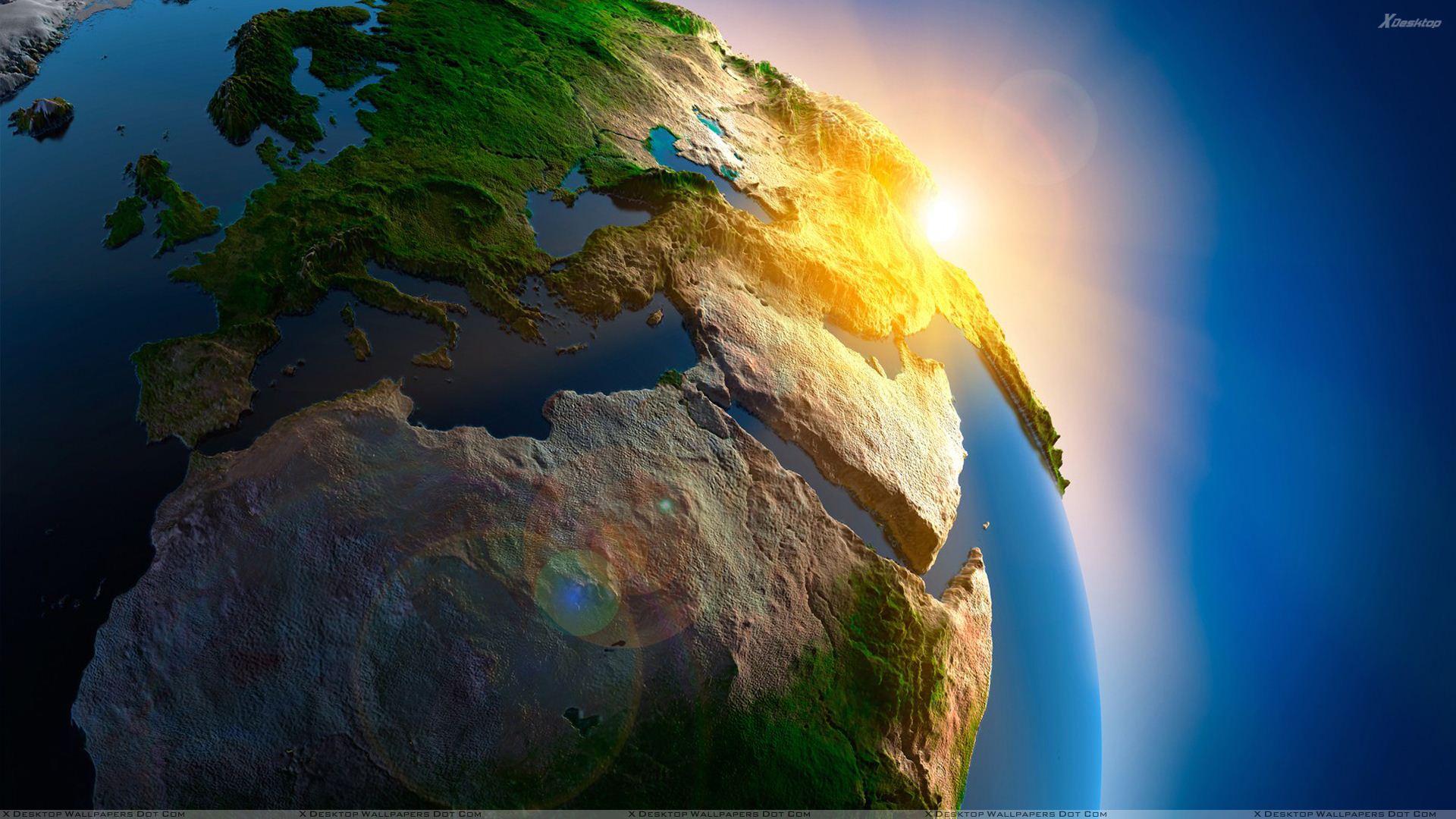
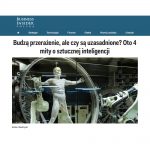

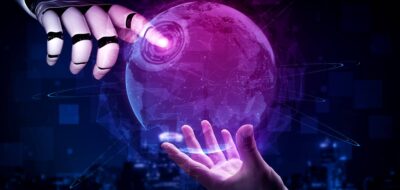
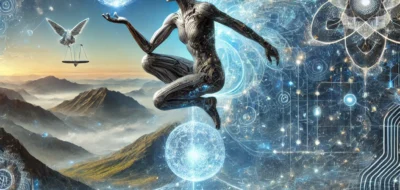
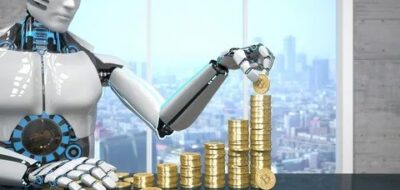
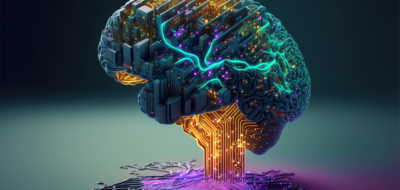


John McLean
Of course it can. We can’t simulate weather because we don’t have access to all the parameters, and we don’t have all the models. But something that is a million times smarter might achieve to get better at it and fully simulate everything. This is absolutely not due to the laws of physics. Even if you take into account quantum physics, you can still simulate the same thing. I don’t say that you can predict something, because we can’t fix randomness, but you can simulate how it would behave for the important parts, the rest dependent on low-level physics is no different with a human than a robot.
Adam Spark Two
Interesting read. That’s actually great. Thanks!
Mac McFisher
Autonomous drones can be of great benefit in agriculture and other endeavors in the developing world.
For example, a self-driving car may move slightly outside of its lane to get a better view of the traffic ahead. There is a gain of information from this action at the cost of a slight increase in risk. Decision theoretic models can make a cost-benefit calculation to decide on the optimal action to take. I expect more advanced decision models soon. This would help our enviroment a lot
John McLean
Autonomous robots, in particular drones, have revolutionized data acquisition, not only for abiotic parameters, but also for recording the behavior of undisturbed animals and collecting biological material. Robots will also play an essential role in population ecology, as they will allow for automatic census of individuals through image processing, or via detection of animals marked electronically. These new technologies will enable automated experimentation for increasingly large sample sizes, both in the laboratory and in the field. Finally, interactive robots and cyborgs are becoming major players in modern studies of animal behavior. Such rapid progress nonetheless raises ethical, environmental, and security issues.
Don Fisher
See this:
http://www.nature.com/articles/srep02627
– this project doesn’t seem to be for SHTF, but for the slow (a few years) transition of a single community, while in contact with The World, to a sustainable model.
Adam Spikey
I was just reading this thing on riparian ecosystem creation and restoration,
http://www.npwrc.usgs.gov/resource/habitat/ripareco/intro.htm
and I remembered hearing that Amazon was going to start using drones to deliver packages.
Collecting data, soil samples, planting seeds and seedlings to re-vegetate, that sort of thing would be a lot easier and cheaper if it were done by automated drones, wouldn’t it?
Invasive species removal, maybe not. You design a flying robot that can uproot a bush.
Jack666
A number of the technologies did not have predictions made or the predictions were downvoted.
TomHarber
Recently: The robots sent in to find highly radioactive fuel at Fukushima’s nuclear reactors have “died”; a subterranean “ice wall” around the crippled plant meant to stop groundwater from becoming contaminated has yet to be finished.
Jacek B2
… and they will stay there forever
DDonovan
Eco-AI? Artificial intelligencess are already very capable at some specialized tasks that require reasoning and other abilities that we typically associate with intelligence. For example, AI can predict some simple aerospace variation re temp, humidity and so on. Despite this genuine progress, we are still a long way from human level intelligence because our best artificial intelligence systems are not general purpose. They cannot quickly adapt to novel tasks the way most humans can do. Same with ecoogy applications. Unles instructed AIs will do almost nothing
johnbuzz3
All of us could contribute to environmental research. Crowdsourcing is a valuable way to advance information and the environment is no exception. The best part here isthat we could have a direct sonnection with scientists to share or to learn. We don’t even need to be an expert to save planet earth – it’s simple. Just participate
CaffD
acording to this we are seeing down of PE, VC funding. Or soon, this model is gonna be obsolete due to the crowdsfunding/sourcing, Next weave – funding based on blockchain
Adam Spikey
Oh no, a computer, please save me. Since idiots like musk want every single piece of technology being controlled by ai, people can program the ai to do whatever the programmer wants.
TomCat
We are facing increasing environmental challenges. In my opinion most urgent ones are food security risks and species loss to deforestation and drought. Our planet faces increasing environmental challenges. Technology for sure could be the key to solving some of our biggest environmental problems. But the probles is within us. If we will not start to act differently we might be last or last among few only species left on Earth
DDonovan
Imagine that instead of getting a free year on the job and then fighting to keep it (by hiding from voters), this campaign would have been her first real exposure on prime-time TV. She would have needed to get out there much earlier and improve or fail.
Mac McFisher
You are pointing out that esteem and personal honor are things people would want and this could ba a baseline for ecological behaviours going forward. Maybe we grow vegetables for fun. You don’t actually have to, but you have a passion for it and you give some it to restaurants.
John McLean
Electronics and manufacturing have reduced prices to the point that many devices, are widelly available. Ecology research and nature preserve has benefited from this but there is still an opportunity gap for new devicess. See IoT as a source of ecological data. From drones to tiny radiotransmitters, technology will soon change the way we sample and preserve our environment. But still there is lots of barriers. Like applicability, iterfacess, access platforms and finally analitics. Still way to go
Norbert Biedrzycki
Right. Devices and much more affordable. But I think that applicability is driven by innovations and need in this case to preserve what’s left. AI and technology might be a disruption only when triggered by people ideas
JohnE3
.. but we the people are the ones to constantly destroy our world. I’m loosing faithe we are capable and willing to reverse what we did
TomK
IMHO here are many areas of ecology that require further AI support. General automation of laboratory procedures is an important area ripe for computer-assisted ecology. Image recognition as a next one. The standard practice of classifying new microscopic organisms is time-consuming and expensive. Could be easily revolutionised with the advent of digital imaging processing and artificial intelligence.
TonyHor
Very good point. Like your arguments
TomHarber
Jack Ma, founder of Chinese e-commerce behemoth Alibaba and one of the world’s most successful entrepreneurs, says he worries about the scary Artificial Intelligence revolution. Artificial Intelligence could decimate middle-class jobs and might cause World War III, but it could also be the opportunities to build new companies and change the current status quo of Africa. He believes that AI will be smarter than human and in the future we will make robot more like human.
http://www.artificialbrain.xyz/the-scary-ai-revolution-will-decimate-jobs-and-might-cause-world-war-iii-jack-ma/
Karel Doomm2
Yeah, I love the AI research field, it is the next big frontier, and has huge potential implications for helping us understand ourselves, and force us to take that next step in evolution. I’d hate to see another passing “wave” of AI research: good results on restricted problems -> overhype -> broken promises -> wait for next wave. Its happened already before.